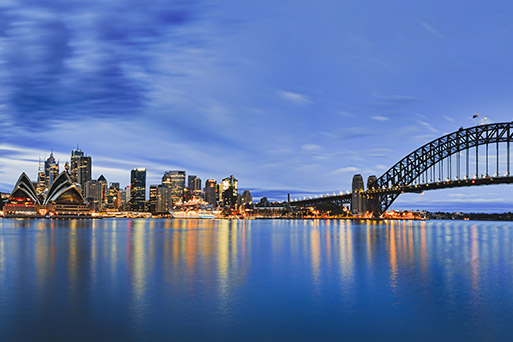January 1, 2020, has heralded a new year, a new decade — and the beginning of the PM’s First Home Loan Deposit Scheme.
Scott Morrison announced the scheme during the crucial last days of the May election campaign, stating it would allow first-time buyers to enter the market sooner by requiring them to save deposits as a little as 5 per cent.
Crucially, just 10,000 Aussies will benefit from Morrison’s leg up each year. And not every first-home buyer will be eligible.
The scheme has received mixed reviews from property pundits.
Property research analyst Cameron Kusher told the Herald Sun in July that “only about 10 per cent of (Australia’s) first-home buyers will be able to access this scheme”, as more than 100,000 first timers had made finance commitments annually over the past decade.
Realestate.com.au chief economist Nerida Conisbee said there was a danger the scheme would push up prices in affordable bands of the market.
But Real Estate Institute of Victoria chief executive Gil King said it incentivised young people and long-term renters to buy their first home.
Here are the basics anyone interested in taking up the scheme needs to know:
How does the scheme work?
-It enables first-time buyers to purchase homes with deposits as low as 5 per cent, and less than 20 per cent, without having to pay lenders’ mortgage insurance (LMI).
-LMI costs apply when there is a deposit of less than 20 per cent.
-The federal government will act as guarantor for the difference between the first-home buyers’ deposits and the 20 per cent threshold (eg. if a participant has a 5 per cent deposit, the government will act as guarantor for the remaining 15 per cent)
What are the perceived benefits?
-Allowing first-home buyers to get into the market sooner, as the time it takes to save a deposit is considered one of the main barriers to home ownership.
-The scheme shields participants from the extra cost of LMI
-The scheme is expected to take the pressure off the “bank of mum and dad”
Who’s eligible?
-Singles with a taxable income for the previous financial year of $125,000 or less, and couples with a combined taxable income for the previous financial of $200,000 or less.
-Those intending to buy with a relative or friend are not eligible.
-Must be an Australian citizen aged at least 18 who’s never owned property before.
-Must intend to live in the property they buy, move in within six months of settlement (or the date an occupancy certificate is issued), and continue to live in the property as long as the home loan has a guarantee under the scheme.
-Must have a deposit of at least 5 per cent, but below 20 per cent, and a loan term of 30 years or less
Check your eligibility here
What types of property can participants buy?
-Participants must buy residential properties — either an established dwelling, a new-build dwelling bought under a house and land package, as land with a separate contract to build a home, or an off-the-plan arrangement
-Properties must not exceed the following:
$700,000 cap for Sydney and Newcastle, Lake Macquarie and Illawarra in NSW
$600,000 cap for Melbourne and Geelong in Victoria
$500,000 cap for ACT
$475,000 cap for Brisbane, Gold Coast and Sunshine Coast in Queensland
$450,000 cap for the rest of NSW, Jervis Bay Territory and Norfolk Island
$400,000 cap for the rest of Victoria, Perth, Adelaide and Hobart
$375,000 cap for Northern Territory
$300,000 cap for the rest of WA and Tasmania, Christmas Island and Cocos (Keeling) Island
$250,000 cap for the rest of SA
How to apply
-Lodge an application with one of the 27 participating lenders (listed below) — the major banks from January 1, and non-major lenders from February 1
-Non-major lenders will receive no less than 50 per cent of the 10,000 loans on offer under the scheme each financial year
-The government body running the scheme, the National Housing Finance and Investment Corporation, will not accept applications directly
-Get in quickly — the scheme is only available to the first 10,000 successful applicants each year.
Major bank lenders (participating from January 1):
- National Australia Bank
- Commonwealth Bank of Australia
Non-major lenders (participating from February 1):
- Australian Military Bank
- Auswide Bank
- Bank Australia
- Bank First
- Bank of us
- Bendigo Bank
- Beyond Bank Australia
- Community First Credit Union
- CUA
- Defence Bank
- Gateway Bank
- G&C Mutual Bank
- Indigenous Business Australia
- Mortgageport
- MyState Bank
- People’s Choice Credit Union
- Police Bank (including the Border Bank and Bank of Heritage Isle)
- P&N Bank
- QBANK
- Queensland Country Credit Union
- Regional Australia Bank
- Sydney Mutual Bank and Endeavour Mutual Bank (divisions of Australian Mutual Bank Ltd)
- Teachers Mutual Bank Limited (including Firefighters Mutual Bank, Health Professionals Bank, Teachers Mutual Bank and UniBank)
- The Mutual Bank
- WAW Credit Union
Source: National Housing Finance and Investment Corporation
For more information, click here
Originally published by Samantha Landy in he Herald Sun HERE.


